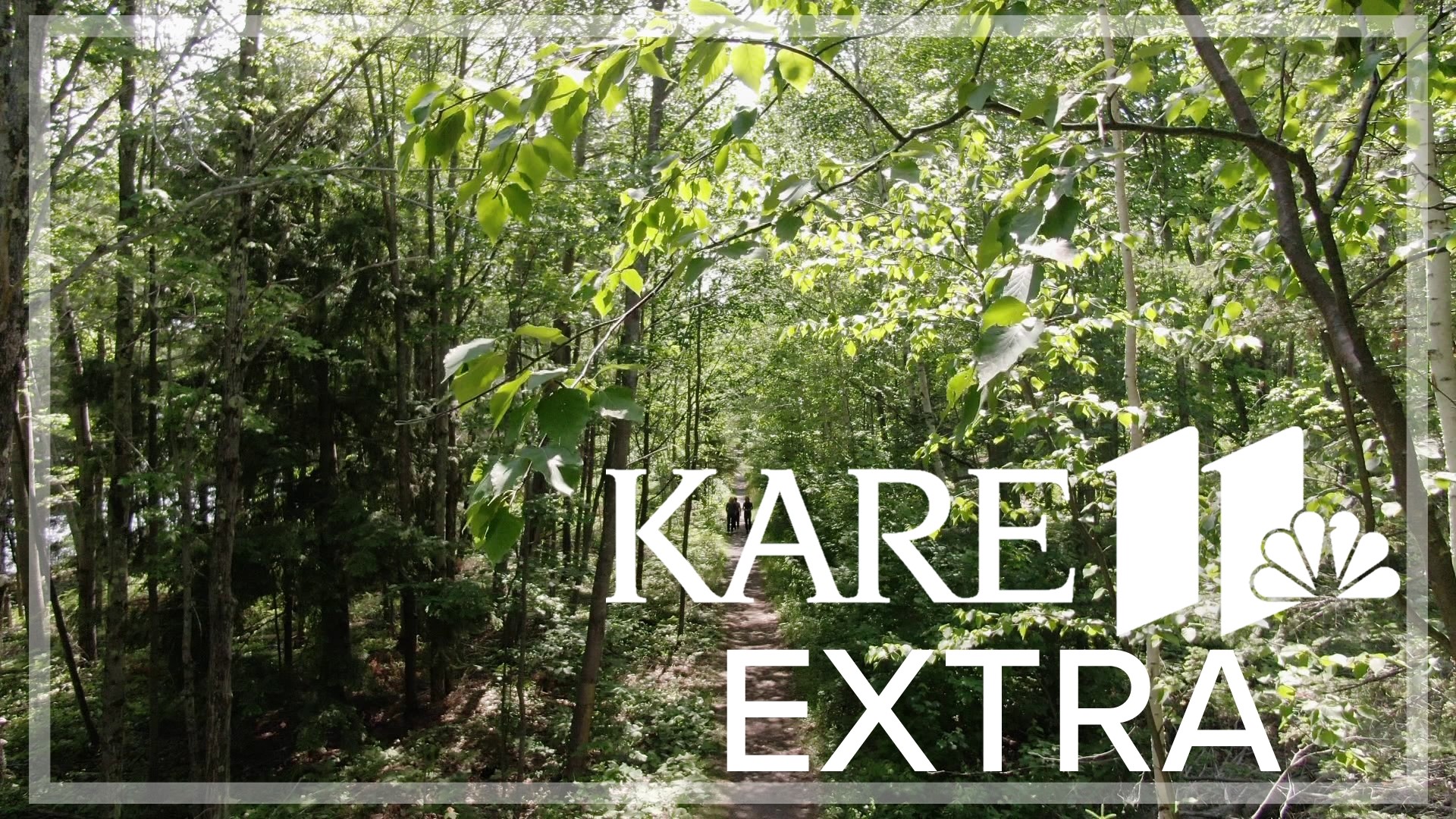BAYFIELD, Wis. — There's something about a walk in the woods that just makes us feel better.
We know it does, and yet, so few of us make the time to do it. But now, a growing number of people in Minnesota are trying to change that by promoting a Japanese practice known as "forest bathing."
David Motzenbecker, founder of Motz Studios Forest Bathing Experiences, believes in the concept so deeply, he left his long-time career to become a certified forest bathing guide.
"I quit my formal landscape architecture career, built up my courage and took the jump and started this full time," he said.
Heidi Zimmer moved from Minneapolis to Bayfield, Wisconsin to open a wellness retreat with a forest-bathing focus.
"I would say of all the classes we offer here at Wild Rice Retreat, forest bathing is becoming just as popular, if not more popular, than our yoga and meditation classes," Zimmer said.
So what exactly is forest bathing? KARE 11's Julie Nelson and Belinda Jensen signed up for one of the retreat's guided classes to find out.
"So what forest bathing is not, it's not a bath in the woods," said Cat Nowicki, guest experience manager at Wild Rice Retreat. "It's not the outcome of exercise -- we're not here to burn calories -- there's no outcome. We're wandering for joy."
It's a simple concept: wandering, slowly and quietly, through the forest.
"It's taking that time intentionally to connect to the sights, the sounds, the smells around you; feeling the earth beneath your feet, noticing those big and small details and really tuning into how much we miss by the business of our minds and our daily lives," Zimmer said.
Julie admits it wasn't as easy as they thought it would be at first, but eventually, they did slow down, taking time to really look -- and listen -- to the forest around them.
They said they also did start to feel better, which came as no surprise to Motzenbecker.
"There is a lot of research that shows being out in nature stimulates your brain waves in a new way that calms you down in 20 minutes," he said. "Walking in the woods versus walking in a neighborhood or a central business district reduces your blood pressure by almost 20%, and your stress hormone by almost 20%."
And the best part? Anyone can do it. You can hire a guide, or you can head outside to a park, or even your own backyard.
"So, I do it every morning. I get up with my coffee, I go out and sit on my back deck. I listen to the birds," Motzenbecker said. "This morning I was on the front deck, the screened-in porch, listening to the rain drip and the birds for 20 minutes. And it's amazing what that can do. "
Honing that skill of stillness and observation, Motzenbecker says, is what makes the practice powerful. Zimmer says she believes the practice is powerful enough that growing the trend could help reverse other troubling ones.
"Oh, as a whole, I think it would lower stress," she said. "I think it would lower anxiety. I think it would lower that sense of overwhelm and exhaustion that so many people feel on a daily basis."
To those who are skeptical, maybe even rolling their eyes, Zimmer says, "Try it anyway."
"What's the worst that can happen? Nothing lasts forever. And so just give it a try," she said. "We offer all kinds of classes here where I encourage people to just be open and curious and you never know what may come up for you. Just try it."
Watch more local news:
Watch the latest local news from the Twin Cities in our YouTube playlist:

